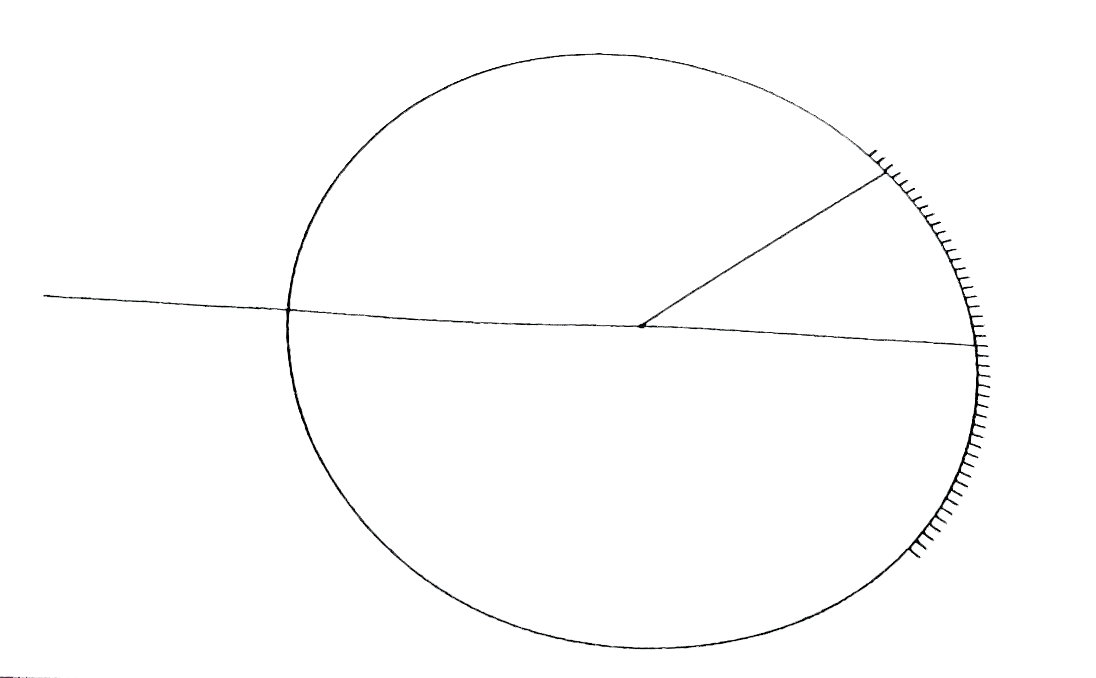a. Explain the following terms related to spherical lenses:
(i) Optical centre (ii)Centre of curvature (iii) Aperture
(iv) Principal focus
b. A converging lens so that it forms an image at 48 cm on the other side of the lens.
a. (i) Optical centre: The centre point of a lens is known as its optical centre. It always lies inside the lens. A light beam passing through the optical centre emerger without any deviation.
(ii) Centre of curvature: It is defined as the centre of the sphere of which the lens is originally a part of. Because the spherical lens consists of two spherical surfaces, the lens has two centres of curvature.
(iii) Aperture. This is the length of breadth of the lens through which refraction takes place.
(iv) Principal focus: A light ray parallel to the principal axis of the lens meets at a point on the principal axis. This point is called the principal focus.
Focal length of converging lens f=12 cm
Image distance v=48 cm
Using the lens formula we get:
1f=1v−1u
1u=1v−1f=148=112
=1−448=−348
∴u=−483=−16cm
So the distance of the object from the lens is 16 cm.
Topper's Solved these Questions
- LIGHT-REFLECTION AND REFRACTIONBOOK - OSWAAL PUBLICATIONCHAPTER - LIGHT-REFLECTION AND REFRACTIONEXERCISE - NCERT CORNER(INTEXT QUESTIONS)
13 Videos
- LIGHT-REFLECTION AND REFRACTIONBOOK - OSWAAL PUBLICATIONCHAPTER - LIGHT-REFLECTION AND REFRACTIONEXERCISE - NCERT CORNER (INTEXT QUESTIONS)
1 Videos
- LIGHT-REFLECTION AND REFRACTIONBOOK - OSWAAL PUBLICATIONCHAPTER - LIGHT-REFLECTION AND REFRACTIONEXERCISE - TOPIC -2 REFRACTION, LENSES, POWER OF LENS (SHORT ANSWER TYPE QUESTIONS II)
23 Videos
- ELECTRICITYBOOK - OSWAAL PUBLICATIONCHAPTER - ELECTRICITYEXERCISE - Textbook Exercises
22 Videos
- MAGNETIC EFFECTS OF ELECTRIC CURRENTBOOK - OSWAAL PUBLICATIONCHAPTER - MAGNETIC EFFECTS OF ELECTRIC CURRENTEXERCISE - TEXTBOOK EXERCISE
18 Videos
Similar Questions
(a) Explain the following terms related to spherical lenses :
(i) optical center (ii) centre of curvature.
(iii) prinicipal axis (iv) aperture
(v) principal focus (vi) focal length
(b) A converging lens has focal length of 12 cm. Calculate at what distance should the object be placed from the lens so that it forms an image at 48 cm on the other side of the lens.
View SolutionIndicate the following terms related to spherical mirrors in figure : pole, centre of curvature , radius of curvature , principal focus.

View SolutionDefine the following terms in the context of spherical mirrors :
Pole, centre of curvature, principal axis, and principal focus.
View SolutionAn illuminated object is placed on the principal axis of a converging lens so that real image is formed on the other side of the lens. If the object is shifted a little,
View SolutionAn illuminated object is placed on the principal axis of a converging lens so that real image is formed on the other side of the lens. If the object is shifted a little,
View SolutionAn illuminated object is placed on the principal axis of a converging lens so the a real image is formed on the other side of the lens. If the object is shifted a little,
View SolutionDefine the following terms related to curved mirrors :
(A) Focus (b) Principal axis ( c ) Centre of curvature (d) Radius of curvature
View SolutionDefine the following terms in the context of spherical mirrors :
(i) Pole
(ii) Centre of curvature
(iii) Radius of curvature
(iv) Principal axis
(v) Principal focus
View SolutionDraw a ray diagram in each of the following cases to show the formation of image, when the object is placed :
(i) between optical centre and principal focus of a convex lens.
(ii) anywhere in front of a concave lens.
(iii) at 2F of a convex lens.
State the signs and values of magnifications in the above mentioned cases (i) and (ii).
View SolutionDraw a ray diagram in each of the following cases to show the formation of image, when the object is placed :
between optical centre and principal focus of a convex lens.
View Solution
